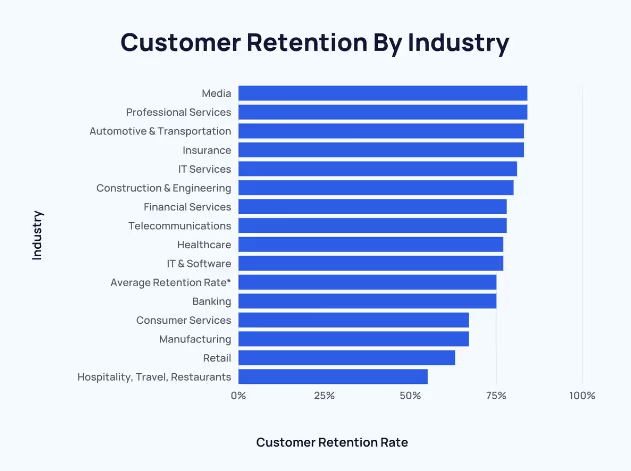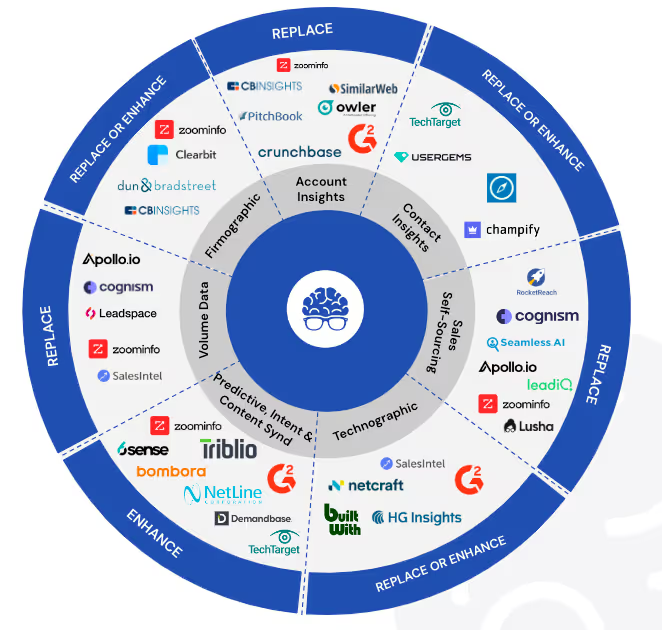Small and Medium-sized Businesses (SMBs) represent a vibrant and essential segment of the global economy, driving innovation and employment across industries. However, for those looking to serve this dynamic market, SMBs present a unique set of challenges that can frustrate even the most seasoned marketers and sales professionals. Understanding these challenges is the first step toward developing effective strategies to engage and support SMBs successfully.
The Fickle and Price-Sensitive Nature of SMBs
Small and Medium-sized Businesses (SMBs) are a crucial component of the global economy, known for their agility, innovation, and significant contribution to job creation. However, one of the defining characteristics of SMBs is their operation within tight budget constraints, making them exceptionally price-sensitive. This financial prudence stems from their typically limited access to capital and the constant pressure to optimize operational costs to remain competitive in fast-moving markets. Consequently, SMBs are not just looking for products or services; they are seeking value-driven solutions that promise a tangible return on investment (ROI).
The heightened price sensitivity among SMBs can often lead to what might be perceived as fickleness in brand loyalty. Unlike larger corporations that might have the luxury of entering into long-term contracts based on brand reputation or established relationships, SMBs are more likely to switch providers in pursuit of more cost-effective solutions. A study by the Small Business Administration (SBA) suggests that small businesses often operate on razor-thin margins, making cost savings and efficiency improvements vital to their survival and growth. This ongoing quest for better value propels SMBs to continuously evaluate their purchasing decisions, emphasizing the need for vendors to demonstrate the clear and immediate benefits of their offerings.
Moreover, the digital transformation trend across all sectors amplifies this dynamic. With an array of digital tools and services available to optimize operations, SMBs are increasingly becoming savvy consumers of technology. However, the challenge remains that many digital solutions are designed with larger enterprises in mind, both in terms of functionality and pricing structures. This disconnect further accentuates the importance of bespoke solutions that cater specifically to the needs and financial realities of SMBs. Evidence of this trend can be found in the growing demand for scalable cloud services, which allow SMBs to pay only for what they use, avoiding the heavy upfront investments that traditional software solutions might require.
Additionally, market research firms like Gartner have consistently highlighted the growing emphasis among SMBs on technology investments that offer direct business outcomes, such as increased sales, higher customer satisfaction, or operational efficiencies. These studies reinforce the notion that demonstrating a clear ROI is not just a value-add; it's a critical requirement for engaging and retaining SMB customers. The need for clear, demonstrable ROI compels vendors to not only adapt their product offerings but also their sales and marketing strategies to articulate value in terms that resonate with the SMB market.
In summary, the unique financial constraints and operational challenges faced by SMBs necessitate a focused approach from vendors, one that highlights the direct impact of their products or services on an SMB's bottom line. Providing concrete evidence of ROI, whether through case studies, testimonials, or customizable solutions that align with specific SMB needs, is essential in building and maintaining strong relationships with this vital segment of the economy.

Inconsistent Online Footprints
The landscape of Small and Medium-sized Businesses (SMBs) in the United States is both vast and varied, with over 33 million registered businesses contributing to the economy in myriad ways. However, delving into the digital presence of these entities reveals a complex picture: only about 17 million of these businesses have an actual online footprint, and a mere 8 million maintain traditional websites. This discrepancy underscores a significant challenge in the digital era—while nearly every business recognizes the importance of an online presence, the depth and visibility of that presence vary greatly.
The diversity in online footprints among SMBs often reflects the range of digital maturity across different sectors and individual business priorities. A considerable number of SMBs, instead of investing in a comprehensive website, opt for simpler, more accessible platforms such as Facebook pages or Yelp profiles to establish their online presence. These choices are influenced by several factors, including resource constraints, the nature of their target market, and the perceived complexity of maintaining a traditional website. For instance, a local bakery may find more value in a Facebook page where they can easily post updates and interact with customers, while a professional services firm might prioritize a formal website to showcase their expertise.
However, this reliance on social media platforms and business directories instead of traditional websites presents unique challenges for tracking and engaging these businesses. While platforms like Facebook and Yelp provide SMBs with valuable tools to reach their audience, they also create a fragmented landscape for data aggregation and analysis. Each platform has its own set of metrics and data access policies, making it difficult to obtain a comprehensive view of an SMB's online activities. Moreover, businesses solely using these platforms may not implement consistent or searchable business information, further complicating efforts to map and track them effectively.
This inconsistency in online footprints means that traditional digital tracking methods, such as search engine scraping or website analytics, are often insufficient for gaining insights into a significant portion of the SMB market. The resultant data gaps can severely impact the ability of marketers, sales professionals, and data providers to target and outreach to these businesses effectively. Without a clear understanding of an SMB's online behavior, crafting personalized and relevant engagement strategies becomes a challenge, leading to missed opportunities and inefficient marketing efforts.
The situation highlights a critical need for innovative approaches to data collection and analysis that can bridge the gap between the diverse online presence of SMBs and the requirements for effective digital engagement. Emerging technologies and methodologies, including AI-driven data aggregation tools and sophisticated social media analytics, are beginning to offer solutions. By leveraging these advanced capabilities, businesses and service providers can better navigate the complex digital footprint of the SMB sector, enabling more accurate mapping, tracking, and engagement strategies that align with the unique characteristics and preferences of these businesses.
Higher Churn Rates
Compared to their larger counterparts, SMBs tend to exhibit higher churn rates. This volatility can be attributed to several factors, including cash flow issues, shifting business priorities, and the ongoing search for more cost-effective solutions. Understanding and addressing the underlying causes of churn within the SMB sector is crucial for building long-term relationships.

The Personal-Business Email Conundrum
SMBs often use a mix of personal and business emails, complicating communication efforts. This practice can lead to challenges in segmenting and targeting communications effectively, affecting the overall success of marketing and sales campaigns.
Digital Adaptation Struggles
Many SMBs are not digital natives, facing hurdles in adopting new technologies and digital practices. This digital gap can affect how they research and engage with potential partners or vendors, making it more challenging to connect through digital channels.
Cash Flow and Resource Constraints
Cash flow and resource constraints are two of the most significant challenges faced by Small and Medium-sized Businesses (SMBs), profoundly impacting their operational efficiency and growth prospects. These challenges are not just anecdotal; they are well-documented across numerous studies and surveys, painting a detailed picture of the hurdles SMBs encounter in their day-to-day operations.
Cash Flow Challenges
Cash flow issues for SMBs arise from a variety of sources, including delayed payments from clients, unforeseen expenses, and the cyclical nature of business revenues. According to a report by the Federal Reserve, a substantial portion of SMBs in the United States experiences cash flow variability, with many indicating that this unpredictability poses a medium to high risk to their businesses. This financial volatility restricts their ability to allocate funds for growth initiatives, including investing in new technologies. The U.S. Bank study notes that 82% of business failures are due to poor cash flow management, underscoring the critical nature of this issue for SMB survival.
Resource Constraints
Beyond financial limitations, SMBs often operate with lean teams, lacking the specialized staff required for implementing and managing new technological solutions. A survey by the National Small Business Association (NSBA) highlighted that many small businesses face significant challenges in adopting new technologies due to the lack of IT support. The survey found that approximately one-third of small businesses manage their IT solutions entirely in-house with no dedicated IT staff, relying instead on employees whose primary expertise lies elsewhere. This scarcity of technical personnel makes it difficult for SMBs to stay abreast of the latest technological advancements, much less implement them effectively.
Compounded Challenges in Adopting New Solutions
The intersection of cash flow and resource constraints creates a compounded challenge for SMBs when it comes to adopting new solutions. The initial costs of technology investments, coupled with the ongoing expenses of maintenance and updates, can be prohibitive. For example, transitioning to a cloud-based infrastructure or adopting an enterprise resource planning (ERP) system involves not just software costs but also training and change management expenses. A study by McKinsey & Company highlights the importance of digital adoption for SMBs, noting that those which effectively leverage digital technologies tend to grow faster than their less digitally savvy counterparts. However, the study also acknowledges the significant barriers to digital adoption, primarily financial and expertise-related.
The Path Forward
Despite these challenges, there are emerging solutions aimed at helping SMBs overcome these hurdles. Financial technology (FinTech) innovations, for example, are offering new ways for businesses to manage their cash flow more effectively, through tools that provide real-time financial insights and faster payment processing. Additionally, as-a-service models in software and infrastructure (SaaS, IaaS) are making it easier for SMBs to access the latest technologies without the need for large upfront investments or specialized IT staff. These subscription-based services not only lower the barrier to entry for adopting new technologies but also provide ongoing support and updates, aligning with the resource realities of many SMBs.
Servicing and Contacting Challenges
Servicing and contacting Small and Medium-sized Businesses (SMBs) present a complex set of challenges that stem from their unique operational characteristics and resource limitations. These businesses often operate with lean teams and have distinct, specialized needs that require tailored solutions, rather than the one-size-fits-all approach that might work for larger corporations. This customization necessitates a deeper understanding of each SMB's specific context, including their industry, market position, and operational workflows. However, acquiring this understanding and maintaining an effective service model can be resource-intensive, posing difficulties for service providers accustomed to more standardized approaches.
Moreover, the task of initially reaching out to and engaging with SMBs is compounded by the often fragmented and incomplete nature of SMB contact information. Unlike larger enterprises that may have dedicated departments for handling external communications, SMBs may not consistently manage their online presence or business listings, leading to outdated or inaccurate contact details. A survey by a leading business directory noted that up to 25% of SMB listings have critical inaccuracies or omissions, impacting the reliability of this data for sales and marketing efforts.
The challenge is further exacerbated by the fact that many SMBs utilize multiple communication channels, with a significant reliance on informal networks or platforms that are not traditionally monitored by sales teams, such as social media or industry-specific forums. This dispersion across various platforms means that traditional sales outreach methods, such as cold calling or email campaigns, might not only be less effective but also may fail to reach these businesses altogether.
Additionally, the sales process itself with SMBs requires a nuanced approach. Given their resource limitations, SMBs are likely to be more cautious and deliberative in their purchasing decisions, emphasizing the importance of trust and personal relationships in the sales process. Establishing this level of trust necessitates ongoing, meaningful engagement that can be challenging to sustain without accurate and comprehensive contact information.
These servicing and contacting challenges highlight the need for innovative solutions that can navigate the complexities of the SMB landscape. Advanced data aggregation and analysis tools, for example, can help in compiling more accurate and comprehensive profiles of SMBs, including up-to-date contact information and insights into their preferred communication channels. Additionally, customer relationship management (CRM) systems tailored for the SMB market can assist service providers in managing the intricacies of personalized outreach and service delivery, ensuring that engagements are both effective and scalable.
Inadequate Database Segmentation
Inadequate database segmentation significantly hampers the ability of businesses to identify and effectively engage with SMB customers. This issue is particularly pronounced in the context of prebuilt databases, which often lack the granularity and specificity needed to distinguish between the nuanced differences among various SMBs. As a result, companies that rely on these databases for sales, marketing, or strategic outreach find themselves navigating a landscape where distinct businesses are indiscriminately lumped together, overlooking the unique characteristics and needs of each entity.
Consider, for instance, the beauty and personal care industry, which encompasses a wide range of services from nail salons and beauty spas to barbershops. Each of these businesses caters to different customer needs, follows distinct operational models, and thus requires tailored approaches in terms of products, services, and marketing strategies. However, in a poorly segmented database, these businesses might all be categorized under a broad "beauty services" label, without differentiation between the specific types of services they offer. This lack of specificity can lead to several issues:
- Ineffective Targeting: A company selling high-end spa equipment would waste resources marketing to nail salons and barbershops if it cannot accurately segment its target audience within the database. Conversely, a supplier of barber chairs might miss potential customers if they're hidden within a generic category that also includes beauty spas and nail salons.
- Misaligned Messaging: Marketing messages and sales pitches that do not account for the unique aspects of each business type are less likely to resonate with potential customers. For example, a nail salon might be interested in products and services that enhance efficiency and customer throughput, while a luxury spa may prioritize items that contribute to creating a relaxing and pampering experience. A one-size-fits-all approach fails to address these distinct needs.
- Customer Experience Disconnects: When businesses are inaccurately segmented, the recommendations, solutions, or products offered to them may not align with their actual requirements or expectations, leading to a poor customer experience and potentially damaging the relationship.
- Operational Inefficiencies: For SMBs themselves, being inaccurately categorized can lead to receiving irrelevant offers and communications, cluttering their inboxes and distracting them from genuine opportunities that might be of interest.
Real-world examples of the impact of inadequate segmentation abound. A vendor specializing in eco-friendly beauty products might struggle to connect with like-minded salons and spas if those businesses are not distinguishable from more traditional establishments within the database. Similarly, a financial services company offering customized insurance packages for barbershops might find it challenging to identify and reach its ideal clientele if those businesses are not segmented apart from the broader personal care industry.
In summary, the lack of effective segmentation in prebuilt databases not only makes it challenging to identify and engage with the right SMB customers but also results in missed opportunities for businesses to connect meaningfully with potential clients. This highlights the need for more sophisticated and nuanced database solutions that can accurately reflect the diversity of the SMB landscape, enabling more targeted, relevant, and effective engagement strategies.
The Role of AI and LeadGenius in Transforming SMB Engagement
The advent of artificial intelligence (AI) is revolutionizing how businesses approach the SMB market. AI-powered platforms can sift through vast amounts of data to identify patterns and insights that were previously unattainable. LeadGenius stands at the forefront of this transformation, offering bespoke data solutions that traditional data lakes and prebuilt databases simply cannot match.
LeadGenius leverages AI to provide real-time, tailored data and insights, enabling businesses to understand and engage SMBs like never before. With access to account signals such as new product launches, funding news, strategic hires, and social insights, businesses can craft highly personalized outreach strategies. LeadGenius goes beyond the basics, offering contact information, emails, phone numbers, and social handles, equipping sales and marketing teams with the tools they need to build an effective SMB playbook.
In the era of customization and personalized outreach, LeadGenius provides the key to unlocking the SMB market. By addressing the specific challenges associated with engaging SMBs, businesses can move beyond the limitations of traditional databases. With the right insights and a strategic approach, finding and winning the right SMB deals becomes not just possible, but a predictable and scalable part of business growth strategies.
For those targeting SMBs, the future is bright. The combination of AI and bespoke data solutions like those offered by LeadGenius heralds a new age of precision and effectiveness in SMB engagement. It's time to embrace these advancements and turn the challenges of the SMB market into opportunities for unparalleled success.




